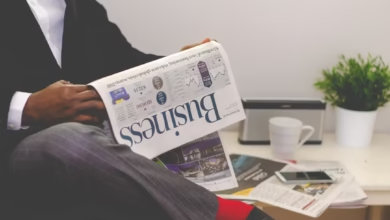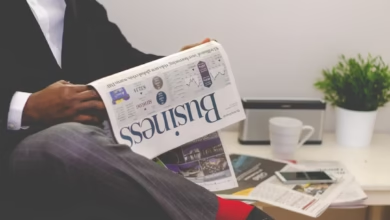Inflation Uncovered: Navigating Its Impact on Purchasing Power, Interest Rates, and Investment Strategies

Inflation is a persistent economic phenomenon that influences nearly every aspect of financial life, from consumer purchasing power to investment strategies. As prices rise, the value of money diminishes, challenging individuals and businesses alike to adapt to changing economic conditions. This article delves into the multifaceted effects of inflation, exploring how it directly impacts consumer purchasing power and various asset classes. We will examine the intricate relationship between inflation and interest rates, highlighting their significance in maintaining economic stability. Additionally, we will offer practical strategies for protecting investment portfolios against inflationary pressures and draw on historical examples of hyperinflation to glean valuable lessons for today’s investors. Finally, we will discuss the role of central banks in combating inflation through monetary policy and the influence of supply chain disruptions on price levels, alongside the broader implications for wages and employment. Join us as we navigate these critical topics to better understand the challenges and opportunities inflation presents in our financial landscape.
- 1. "Understanding Inflation: Effects on Consumer Purchasing Power and Asset Classes"
- 2. "Navigating Interest Rates: The Link Between Inflation and Economic Stability"
- 3. "Inflation-Proofing Your Portfolio: Strategies and Historical Lessons from Hyperinflation"
1. "Understanding Inflation: Effects on Consumer Purchasing Power and Asset Classes"
Inflation is a persistent increase in the general price level of goods and services in an economy over a period of time. One of its most significant effects is on consumer purchasing power, which refers to the amount of goods and services that a unit of currency can buy. As inflation rises, the value of money diminishes, leading consumers to purchase less with the same amount of money. For instance, if inflation is at 3% annually, a product that costs $100 today will cost $103 a year later, effectively reducing the purchasing power of consumers.
The impact of inflation extends beyond individual consumers; it also affects various asset classes. Generally, tangible assets such as real estate and commodities, like gold, tend to retain or even increase their value during inflationary periods. This is because they are seen as hedges against inflation, as their prices often rise in tandem with the overall price level. Conversely, fixed-income investments, such as bonds, may suffer as their returns do not typically keep pace with rising inflation, leading to negative real returns for investors.
Equities can exhibit mixed behavior in the face of inflation. Companies that can pass on increased costs to consumers—typically those in sectors like utilities and consumer staples—may sustain their profit margins, while others may struggle if their costs rise faster than their ability to increase prices. This variability underscores the importance of asset allocation and diversification in an investment strategy aimed at mitigating the effects of inflation.
In summary, understanding inflation's effects on consumer purchasing power and different asset classes is crucial for individuals and investors alike. By recognizing how inflation influences spending behavior and the relative performance of assets, stakeholders can make informed decisions that protect their financial well-being in an inflationary environment.
2. "Navigating Interest Rates: The Link Between Inflation and Economic Stability"
Interest rates play a crucial role in the relationship between inflation and economic stability. Central banks, such as the Federal Reserve in the United States, adjust interest rates as a primary tool to manage inflation and maintain economic balance. When inflation rises, central banks often increase interest rates to cool down consumer spending and borrowing. Higher interest rates make loans more expensive, which can slow down economic activity, as both consumers and businesses may be less inclined to take on debt.
Conversely, during periods of low inflation or deflation, central banks may lower interest rates to stimulate the economy. Lower rates reduce the cost of borrowing, encouraging consumer spending and investment, which can help boost economic growth. This dynamic illustrates the delicate balance that central banks must maintain to foster a stable economy.
Interest rates not only affect inflation directly but also influence various aspects of the economy, including savings, investments, and employment. For example, higher interest rates can lead to reduced capital spending by businesses, potentially slowing job growth. On the other hand, when rates are kept low for an extended period, it can lead to asset bubbles, as investors search for higher returns in riskier assets.
The interplay between inflation and interest rates is vital for economic stability. An environment of persistently high inflation can erode consumer confidence and purchasing power, while excessively low inflation or deflation can signal economic stagnation. Therefore, central banks continuously monitor economic indicators to make informed decisions about interest rate adjustments. By navigating these rates carefully, they aim to sustain economic growth while keeping inflation in check, creating a stable environment for consumers and businesses alike.
3. "Inflation-Proofing Your Portfolio: Strategies and Historical Lessons from Hyperinflation"
Inflation can erode the purchasing power of consumers and investors alike, making it crucial to adopt strategies that can help protect investment portfolios during inflationary periods. One effective approach is to diversify across asset classes that historically perform well during inflation. Real assets, such as real estate and commodities, tend to retain value as their prices rise in tandem with inflation. For instance, investing in real estate can provide rental income and appreciation, both of which often outpace inflation.
Another strategy involves incorporating inflation-linked securities, such as Treasury Inflation-Protected Securities (TIPS) in the United States. These bonds adjust their principal value based on the Consumer Price Index, ensuring that investors maintain their purchasing power over time. Moreover, equities can serve as a hedge against inflation, particularly those in sectors such as energy, materials, and consumer staples, which can pass on higher costs to consumers.
Historical lessons from instances of hyperinflation, such as in Zimbabwe in the late 2000s or Germany during the Weimar Republic in the 1920s, underscore the importance of timely adjustments to investment strategies. In these cases, traditional savings accounts lost significant value as prices soared, prompting investors to seek alternative assets. During hyperinflation, individuals turned to physical goods and foreign currencies, demonstrating the need to remain agile and informed about market conditions.
Investors can also consider incorporating commodities, such as gold and silver, which have traditionally served as safe havens during times of economic instability and inflation. These assets often appreciate when fiat currencies decline in value, preserving wealth in turbulent times.
Ultimately, a proactive approach that combines diversification, inflation-protected securities, and a focus on hard assets can help shield portfolios from the adverse effects of inflation. By learning from historical examples of hyperinflation, investors can adopt strategies that not only mitigate risk but also position themselves to capitalize on opportunities that arise in inflationary environments.
In conclusion, the intricate dynamics of inflation profoundly influence consumer purchasing power, interest rates, and overall economic stability. As we’ve explored, rising inflation erodes the value of money, impacting not only everyday consumers but also various asset classes. By understanding the historical context of hyperinflation and the lessons learned from past economic crises, investors can adopt effective strategies to protect their portfolios against inflationary pressures.
Central banks play a crucial role in combating inflation through monetary policy, adjusting interest rates to stabilize the economy. However, external factors such as supply chain disruptions further complicate this relationship, often exacerbating inflation's effects on wages and employment. As we navigate this complex landscape, it is essential for consumers and investors alike to remain vigilant and informed, adapting their strategies to safeguard their financial health in an ever-changing economic environment. Ultimately, a proactive approach to understanding and addressing inflation can help mitigate its impact and enhance long-term financial resilience.





